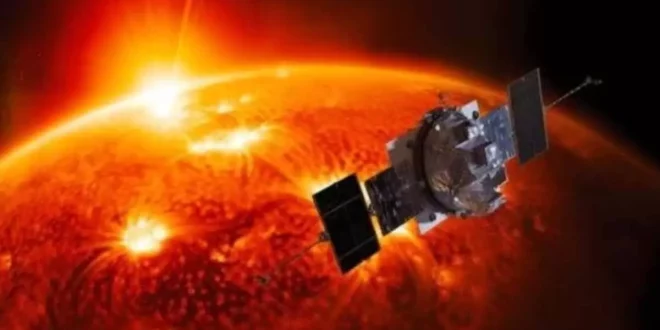A New Dawn for India’s Space Ambitions
India’s maiden solar mission, Aditya-L1, is now in the final phase of its journey towards Lagrange Point 1 (L1), a spot 1.5 million kilometers from Earth where gravitational forces between Earth and the Sun balance the satellite’s orbit. Launched by ISRO on September 2, 2023, Aditya-L1 is a groundbreaking mission that aims to study the outer atmosphere of the Sun and gather real-time solar weather data, a milestone for Indian space science.
This mission marks India’s entry into heliophysics—a field so far dominated by agencies like NASA and ESA. But Aditya-L1 is more than just a scientific milestone. It’s a symbol of India’s growing global stature in space technology.
Why the Sun Matters: The Power Behind the Solar Mission
The Sun affects life on Earth in more ways than just providing light and warmth. Solar flares and coronal mass ejections (CMEs) can cause geomagnetic storms that impact satellites, power grids, and even air travel. In recent years, the world has witnessed increasing instances of solar disruptions affecting modern technology.
That’s where Aditya-L1 steps in. The satellite will constantly monitor the Sun, especially its corona (outer atmosphere), where temperatures can soar over a million degrees Celsius—far hotter than the solar surface. Understanding this mystery could help scientists better predict solar storms and protect Earth-based technologies.
What’s on Board: The Science Instruments of Aditya-L1
Aditya-L1 is equipped with seven state-of-the-art payloads, developed by various Indian scientific institutes. These include:
-
VELC (Visible Emission Line Coronagraph): The mission’s primary instrument to study the corona.
-
SUIT (Solar Ultraviolet Imaging Telescope): Designed to capture UV images of the Sun’s surface.
-
ASPEX & PAPA: For studying the solar wind and energetic particles.
-
Magnetometer: To measure magnetic field variations in the L1 orbit.
Why the Sun Matters: The Power Behind the Solar Mission
The Sun affects life on Earth in more ways than just providing light and warmth. Solar flares and coronal mass ejections (CMEs) can cause geomagnetic storms that impact satellites, power grids, and even air travel. In recent years, the world has witnessed increasing instances of solar disruptions affecting modern technology.
That’s where Aditya-L1 steps in. The satellite will constantly monitor the Sun, especially its corona (outer atmosphere), where temperatures can soar over a million degrees Celsius—far hotter than the solar surface. Understanding this mystery could help scientists better predict solar storms and protect Earth-based technologies.
What’s on Board: The Science Instruments of Aditya-L1
Aditya-L1 is equipped with seven state-of-the-art payloads, developed by various Indian scientific institutes. These include:
-
VELC (Visible Emission Line Coronagraph): The mission’s primary instrument to study the corona.
-
SUIT (Solar Ultraviolet Imaging Telescope): Designed to capture UV images of the Sun’s surface.
-
ASPEX & PAPA: For studying the solar wind and energetic particles.
-
Magnetometer: To measure magnetic field variations in the L1 orbit.
 Indian Thought Latest News & Views
Indian Thought Latest News & Views



